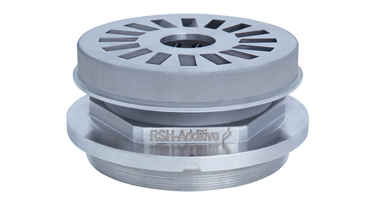
Sustainable Development
Roein Sazeh Hooshmand is dedicated to sustainable metal 3D printing. We believe that utilizing this technology responsibly plays a crucial role in protecting our environment.One of the most significant advantages of metal 3D printing is it's contribution to sustainability. We actively strive to:
Minimize material waste:
3D printing allows us to use only the necessary material for each project, significantly reducing scrap and conserving resources.
Enhance energy efficiency:
Compared to traditional manufacturing methods, 3D printing requires less energy, contributing to a smaller carbon footprint.
Optimize design for sustainability:
3D printing enables the creation of lighter and more efficient parts, leading to reduced material consumption and energy usage throughout their lifecycle.
In today's world, prioritizing sustainability is essential. 3D printing emerges as a crucial technology, offering solutions to minimize waste and resource depletion.
Benefits of 3D printing for sustainability
Reduced waste:
We utilize a precise approach, minimizing material waste by only printing what is absolutely required. This translates to significant resource conservation.
Energy efficiency:
Compared to traditional methods, 3D printing boasts lower energy consumption, contributing to a more sustainable future.
Sustainable design:
3D printing empowers us to design parts that are lighter and more functional, requiring less material and minimizing their environmental footprint throughout their lifespan.
3D printing further strengthens sustainability efforts by minimizing industrial waste:
Unlike conventional manufacturing techniques that generate significant waste materials, 3D printing utilizes only the necessary material for each project. This approach can potentially reduce material usage by up to 90%.Additionally, the ability to design for efficiency allows for the creation of parts that require less material and energy overall.
Industries embracing 3D printing for enhanced sustainability
Transportation:
Lighter vehicle parts produced through 3D printing contribute to improved fuel efficiency and reduced emissions.
Architecture:
Utilizing recycled materials in construction projects becomes possible with 3D printing, promoting a more sustainable and cost-effective approach.
Medical:
The ability to create custom medical devices with 3D printing minimizes waste and promotes better patient outcomes.
Challenges and solutions for sustainable 3D printing:
Sourcing sustainable materials:
Identifying and utilizing readily available, eco-friendly materials is key. We actively support research and development initiatives focused on biodegradable and recyclable materials for 3D printing.
Developing efficient recycling methods:
Effective recycling processes for 3D-printed parts are crucial for maximizing sustainability. We advocate for the development and implementation of efficient recycling methods to ensure responsible end-of-life management for these components.
By embracing these challenges and implementing innovative solutions, 3D printing has the potential to be a powerful tool in building a more sustainable and greener future for generations to come.




